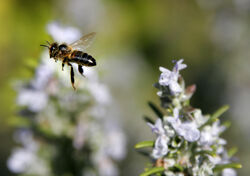Assessment |
Biopsychology |
Comparative |
Cognitive |
Developmental |
Language |
Individual differences |
Personality |
Philosophy |
Social |
Methods |
Statistics |
Clinical |
Educational |
Industrial |
Professional items |
World psychology |
Biological: Behavioural genetics · Evolutionary psychology · Neuroanatomy · Neurochemistry · Neuroendocrinology · Neuroscience · Psychoneuroimmunology · Physiological Psychology · Psychopharmacology (Index, Outline)
In evolutionary biology, evolutionary relay describes how independent species acquire similar characteristics as a result of their evolution in similar ecosystems, but not at the same time.
A classic example is the dorsal fin of the extinct ichthyosaurs and the shark. Another example is the streamlined, fish-like shape of the ichthyosaurs and the shape of extant dolphins and small whales. Except for the tail fins, cetaceans greatly resemble fish in outline, but are instead descended from four-legged land mammals. Their closest land relative today is thought to be the hippopotamus. Their modern shape is due to their water-based life cycle, as is the shape of the fish.
Pterosaurs resembled bats not only regarding flight, but also in regard to hair. Some species of pterosaur actually had hair or fur, presumably as a result of separate evolution, as the common ancestor of the archosaurs (whence pterosaurs are thought to have come) was quite distant from the therapsid mammal ancestors.
Evolutionary relay is a similar phenomenon to convergent evolution and parallel evolution, but they can all be distinguished. In convergent evolution, independent organisms acquire similar characteristics while evolving in different habitats (e.g. bird and fly wings). Parallel evolution occurs when two independent species evolve together at the same time in the same ecospace and acquire similar characteristics (e.g. extinct browsing-horses and extinct paleotheres).

Bee hovering in flight
Other examples[]

Ruby-throated Hummingbird hovering in flight
- Bees and hummingbirds independently developed the ability to hover in flight to get nectar from flowers.
- Pill bugs and armadillos both have segmented body armor so they can roll up into an armored ball to escape predators.
See also[]
Topics in evolutionary ecology
|
|---|
| Patterns of evolution: Convergent evolution • Evolutionary relay • Parallel evolution |
| Colour and shape: Aposematism • Mimicry • Crypsis |
| Interactions between species: Mutualism • Cooperation • Predation • Parasitism |
is:Ósamhliða þróun
| This page uses Creative Commons Licensed content from Wikipedia (view authors). |